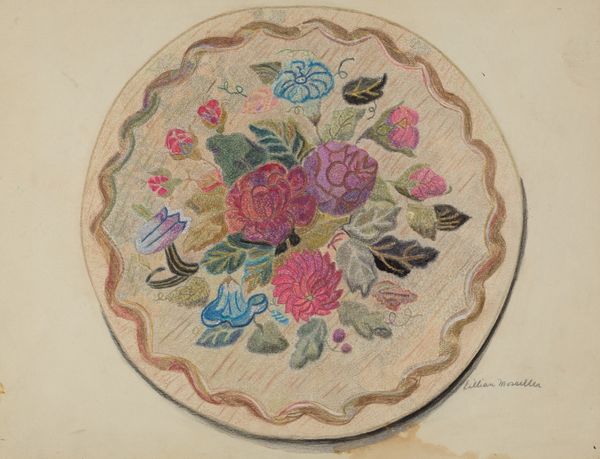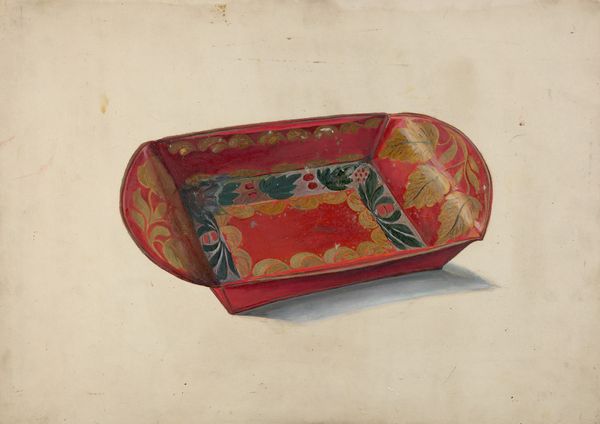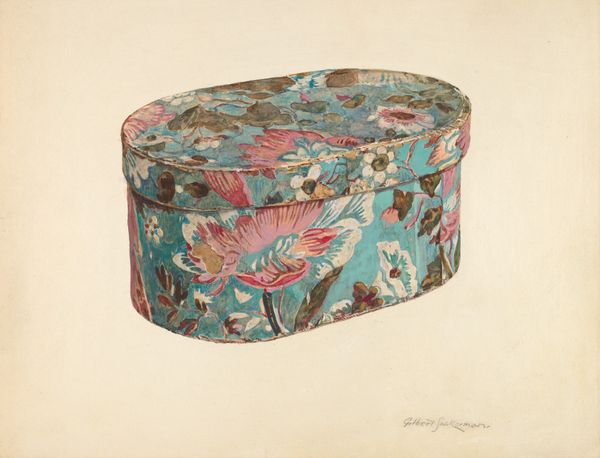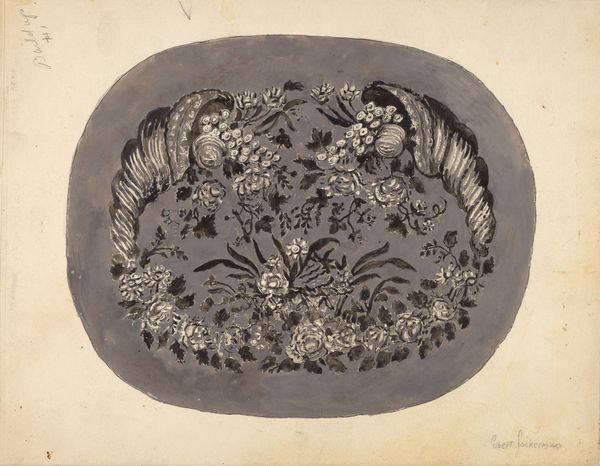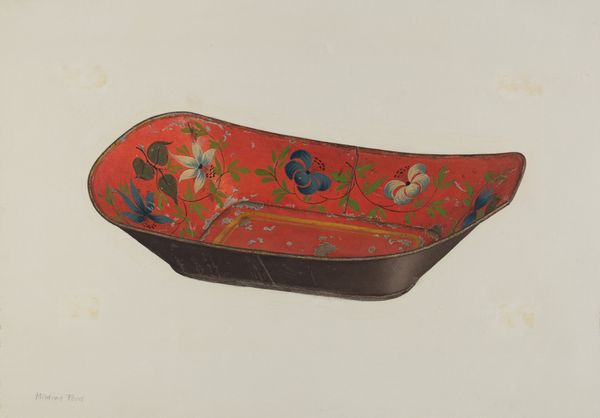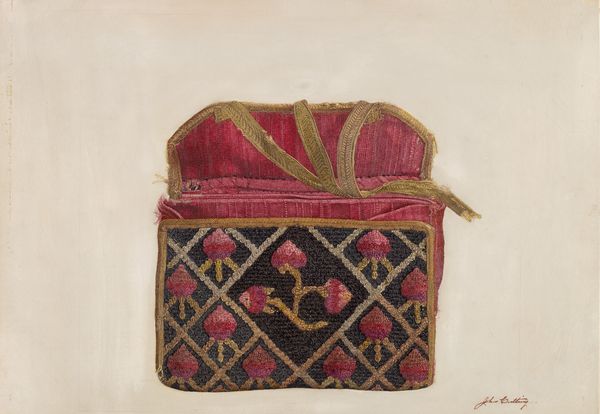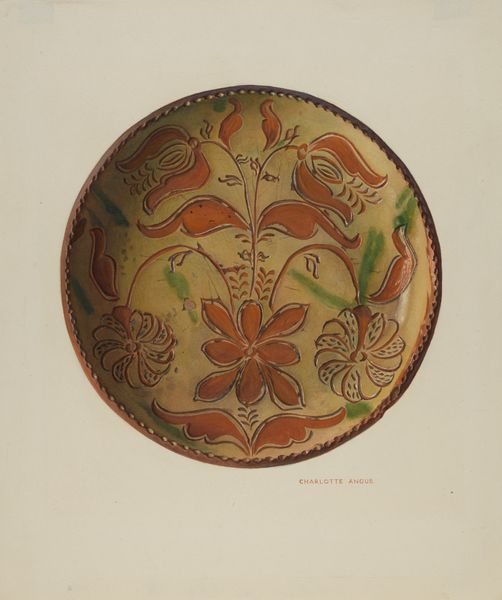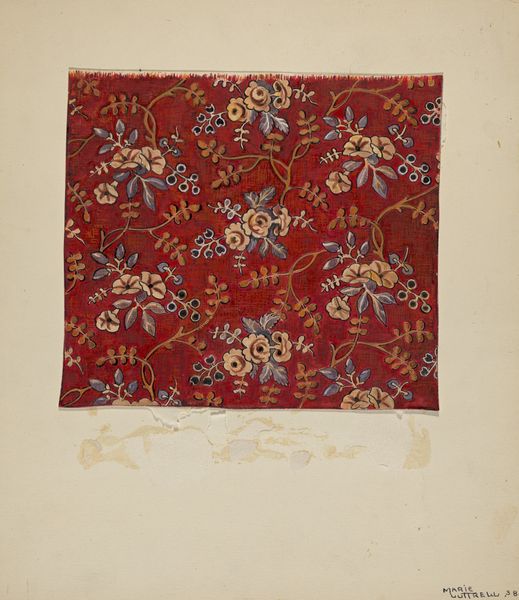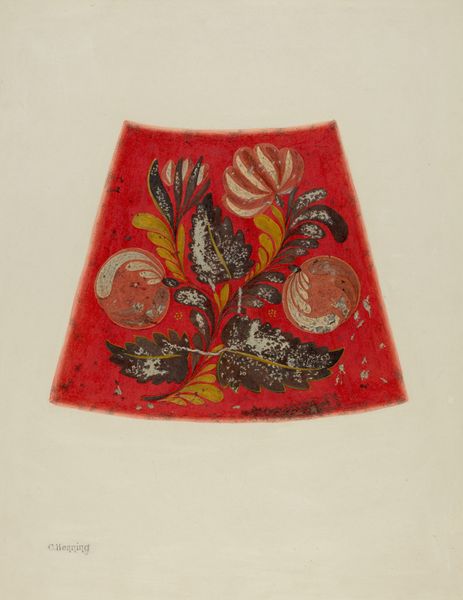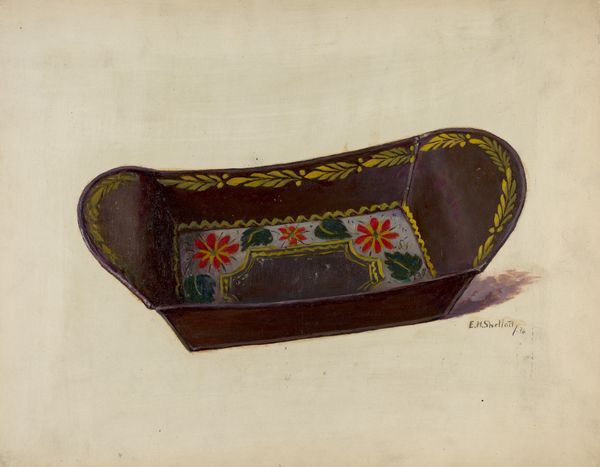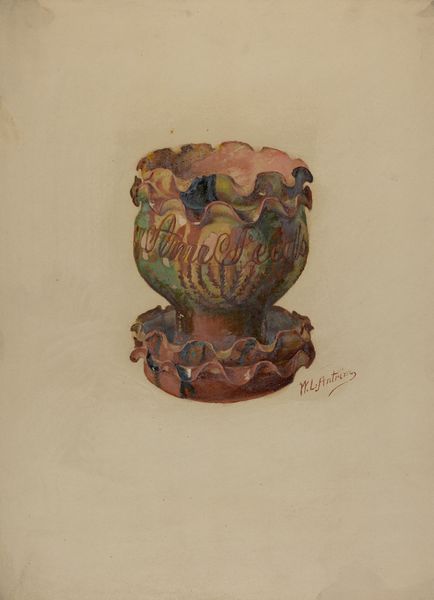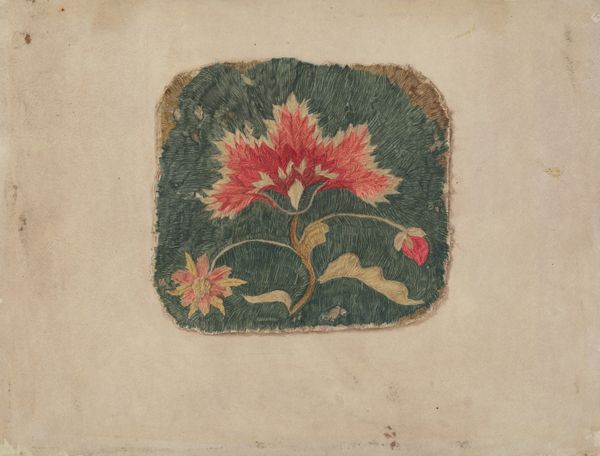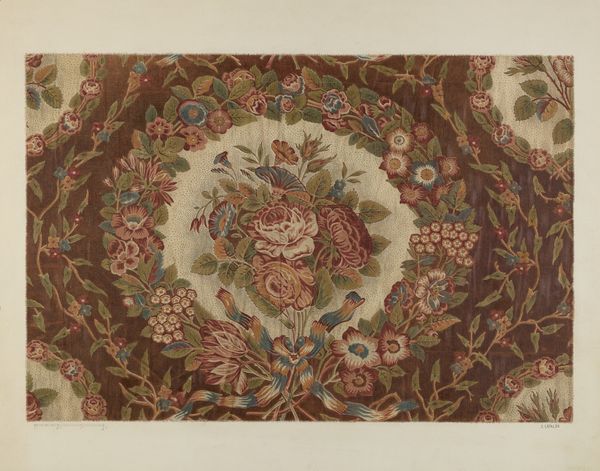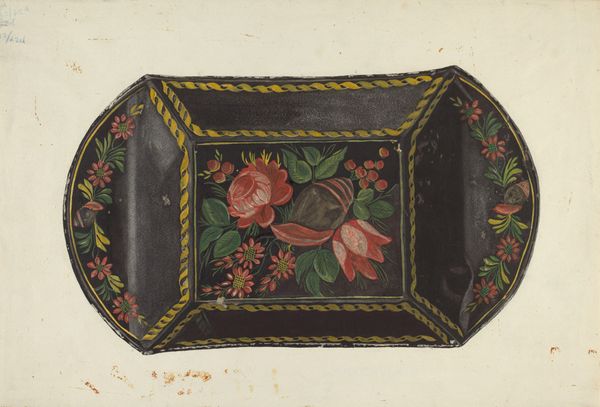
drawing, painting, watercolor
#
drawing
#
water colours
#
painting
#
oil painting
#
watercolor
#
decorative-art
#
watercolor
Dimensions: overall: 32.2 x 41.7 cm (12 11/16 x 16 7/16 in.) Original IAD Object: 16"long; 10"wide
Copyright: National Gallery of Art: CC0 1.0
Curator: I'm immediately struck by its quiet formality. There's a reserve here, wouldn't you say? Editor: Indeed. It evokes a particular sense of domesticity and decorum from its era. We're looking at "Stool," a watercolor from around 1938 by Charles Bowman. Curator: A seemingly simple object, yet I sense deeper symbolic echoes. Oval shapes, like the stool's top, often reference feminine qualities, receptivity, and the vessel. Then, consider the flowers; do they offer clues? Editor: Perhaps. The colors are muted, but I see suggestions of roses, lilies, and maybe some chrysanthemum-like blooms. Roses often symbolize love or secrecy. Lilies indicate purity and rebirth, whereas chrysanthemums might mark longevity or remembrance, though in the Western tradition, their meaning varies considerably across contexts and time periods. Curator: And aren’t stools fascinating in themselves? They signify both usefulness and subservience. As an object meant to be sat upon, what does that mean in a social hierarchy? Who would sit on such an object, and in what circumstances? In this watercolor we also witness an element of decorativeness that softens the object. Editor: Certainly. Given the delicacy of the rendering and the meticulous application of watercolor, it suggests that this might have been something valued, cherished even if ostensibly utilitarian. Consider the detail in the floral pattern, that cross-stitch texture that hints at craft, home life and repetition. Curator: It’s as though the artist elevated the humble stool to a position of some respect or dignity, making an attempt to freeze it in a static scene through paint and water, thus rendering it significant through art. How fascinating. Editor: Quite right. It urges us to find layers of stories within the overlooked and banal and appreciate how ordinary objects carry immense symbolic weight.
Comments
No comments
Be the first to comment and join the conversation on the ultimate creative platform.
